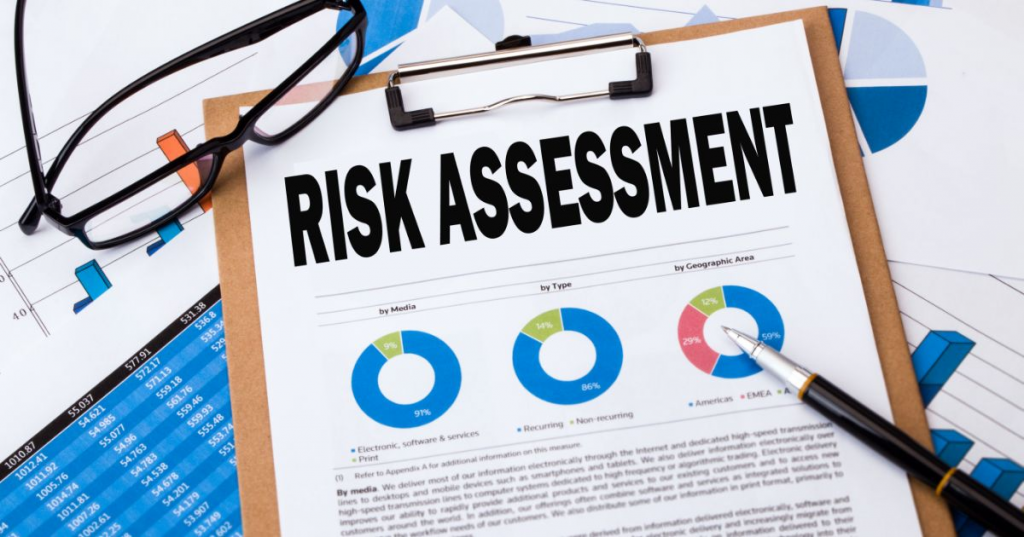How to Become an Actuary? Definition & Responsibilities
Have you ever wondered how insurance companies determine the cost of your car insurance or how pension plans ensure financial security in retirement? The answer lies in the fascinating world of actuaries. These skilled professionals wield the power of mathematics, statistics, and financial expertise to assess risk and ensure financial stability across various industries.
If you're intrigued by a career that blends analytical thinking with real-world impact, becoming an actuary might be the perfect fit for you. This article delves deep into the exciting world of actuaries, exploring what they do daily, the educational path to becoming one, and the potential salary this rewarding career offers. So, buckle up and get ready to discover the fascinating world of risk assessment and financial planning!
What is an Actuary?

An actuary is a professional who uses mathematics, statistics, and financial theory to analyze and manage the financial risks associated with uncertain future events. Actuaries primarily work in the insurance industry, pension plans, and financial services, where they develop and evaluate policies and strategies to minimize risk and maximize profitability.
Their expertise helps companies predict and prepare for potential financial losses due to events such as natural disasters, accidents, illnesses, and market fluctuations. Actuaries play a critical role in pricing insurance policies, setting reserves for future claims, and ensuring the financial stability of their organizations.
What does an Actuary Do Daily?
An actuary's daily tasks vary depending on their specific role and industry, but generally, they engage in a range of analytical and strategic activities. Here are some typical tasks that actuaries perform daily:
Data Analysis

A significant portion of an actuary's day involves working with data. Their work heavily relies on data analysis to make informed decisions. The first step in this process is data collection and preparation. Actuaries gather data from various sources, including historical insurance claims, financial reports, demographic data, and economic indicators. They then clean the data to ensure it is accurate, consistent, and free from errors or missing values, often correcting or removing corrupt records and filling in missing values.
Once the data is prepared, actuaries conduct exploratory data analysis (EDA) to understand its basic features. They use descriptive statistics such as mean, median, standard deviation, and frequency distributions to gain insights into the data. Visualization techniques, including histograms, scatter plots, and box plots, help identify patterns, trends, and outliers. This initial analysis sets the stage for more complex modeling and risk assessment.
Developing Models
The process of model development is intricate and involves several stages, including data collection, model selection, calibration, validation, and implementation. These models help organizations make informed decisions based on quantitative analysis and predictive insights.
Model Selection
Once the data is prepared, actuaries move on to selecting the appropriate model for the task at hand. They must understand the problem and determine which type of model is most suitable. Common models used by actuaries include regression models, time series models, survival models, and machine learning algorithms. The choice of model depends on the nature of the data, the specific business problem, and the desired outcome.
Model Calibration
Model calibration is the process of adjusting the model parameters to fit the data accurately. Actuaries use statistical techniques to estimate the parameters of the chosen model. They run the model on historical data and adjust it to minimize the difference between the model's predictions and actual outcomes. Techniques such as maximum likelihood estimation, least squares, and Bayesian inference are commonly used in this phase. Calibration ensures that the model accurately reflects the underlying patterns and relationships in the data.
Model Validation
After calibration, the model must be validated to ensure its accuracy and reliability. Actuaries use various validation techniques to assess the model's performance. They split the data into training and testing sets, cross-validation, and backtesting. Validation helps identify any overfitting or underfitting issues and ensures that the model performs well on unseen data. Actuaries also conduct sensitivity analysis to understand how changes in model inputs affect the outputs, which is crucial for evaluating the model's robustness.
Model Implementation
Once the model is validated, it is ready for implementation. Actuaries work closely with other departments, such as IT and operations to integrate the model into the company's systems and processes, including developing user interfaces, creating automated workflows, and ensuring that the model outputs are accessible and usable by decision-makers. Implementation also includes setting up monitoring systems to track the model's performance over time and making necessary adjustments as new data becomes available.
Monitoring and Maintenance
Model development is not a one-time task; it requires ongoing monitoring and maintenance. Actuaries continuously track the model's performance and make updates as needed. Their tasks are recalibrating the model with new data, adjusting for any changes in the underlying assumptions, and refining the model to improve its accuracy.
Risk Assessment

Actuaries are experts in risk assessment, a process that involves evaluating the likelihood and impact of future events to help organizations manage potential risks.
In the risk modeling phase, actuaries apply various statistical and mathematical techniques to assess potential risks. They use probability distributions to model uncertainties and predict the likelihood of different outcomes. Actuarial models, such as mortality tables, life tables, and survival models, are employed to estimate the financial impact of future events. Predictive modeling techniques, including regression analysis, time series analysis, and machine learning, help forecast future trends and outcomes. These models are essential for estimating the probability and potential cost of different risks.
Statistical analysis and hypothesis testing are critical components of risk assessment. Actuaries test assumptions and theories about the data using statistical tests such as t-tests and chi-square tests. They determine relationships between variables and assess whether one variable influences changes in another. This rigorous analysis ensures that their models are based on sound statistical principles and that their risk assessments are reliable.
Valuation and reserving are key activities where actuaries calculate the present value of future cash flows to determine liabilities and the amount of reserves required. Discounting techniques are used to ensure accurate valuations. Loss reserving involves estimating the reserves needed to cover future insurance claims using methods like the chain-ladder method or the Bornhuetter-Ferguson method. These activities are crucial for maintaining the financial stability of insurance companies and ensuring they have sufficient funds to cover future claims.
Optimization and scenario analysis are also vital aspects of risk assessment. Actuaries use optimization techniques to identify the best strategies for minimizing costs and maximizing profits under given constraints. Scenario analysis allows them to evaluate the impact of different situations, such as economic downturns or natural disasters, on an organization's financial stability. It helps companies prepare for potential risks and develop robust risk management strategies.
Actuaries utilize various tools and software in their risk assessment work. Statistical software like R, SAS, SPSS, and Python are used for statistical analysis and modeling. Microsoft Excel serves as a tool for data manipulation, calculations, and visualizations. SQL is employed for managing and querying large datasets. Specialized actuarial software, such as Prophet, AXIS, and MoSes, is used for actuarial calculations and modeling. These tools enable actuaries to analyze data and develop accurate risk models efficiently.
Product Development

Actuaries analyze market trends, customer needs, and competitive products to identify opportunities for new products. This data-driven approach helps ensure that new products meet market demands and comply with regulatory requirements.
Once the initial research is complete, actuaries proceed to design the product. Analysis helps determine the appropriate pricing structure to ensure that the product is both competitive and profitable. Actuaries also consider regulatory requirements and industry standards in the product design process.
During the product development phase, actuaries perform detailed financial modeling to project the product's performance. They create models to simulate various scenarios and assess the product's financial viability under different conditions. These models take into account factors such as expected sales volume, claims frequency and severity, operating expenses, and investment returns.
After the product design and financial modeling are complete, actuaries assist in the implementation and launch of the product. They work closely with other departments, such as marketing, underwriting, and IT, to ensure that the product is effectively communicated and delivered to the market.
Once the product is launched, actuaries continue to monitor its performance and make necessary adjustments. They track key performance indicators (KPIs) such as sales volume, loss ratios, and customer feedback. If the product is not performing as expected, it can recommend changes to pricing, terms, or marketing strategies to improve its performance. Continuous monitoring and adjustment are essential for maintaining the product's competitiveness and profitability in a dynamic market.
Pricing and Reserving

Pricing includes setting the premiums that customers will pay for insurance policies while reserving requires determining the amount of money an insurance company must hold in reserve to pay future claims. Both tasks require a deep understanding of risk assessment, statistical analysis, and financial modeling.
Pricing
In the pricing process, actuaries start by analyzing historical data to understand the frequency and severity of claims. They use statistical models to predict future claim occurrences and costs. Factors included policyholder demographics, past claims experience, economic conditions, and other relevant variables. Based on the above data, actuaries can estimate the expected cost of claims for different types of insurance products.
Once the expected claims costs are estimated, actuaries incorporate additional factors such as administrative expenses, profit margins, and the cost of capital. They use complex actuarial models to calculate the appropriate premium rates that will cover these costs while remaining competitive in the market. These models often involve techniques like generalized linear modeling (GLM) and other advanced statistical methods to ensure accuracy and reliability.
Risk classification is another important aspect of pricing. Actuaries segment policyholders into different risk categories based on their characteristics and behaviors. Higher-risk policyholders pay more, while lower-risk policyholders benefit from lower premiums, maintaining fairness and actuarial soundness.
Actuaries also perform sensitivity analysis and scenario testing to assess the impact of various assumptions and external factors on pricing. Regulatory compliance is another critical consideration in pricing, as actuaries must ensure that their pricing methods comply with legal requirements and industry standards.
Reserving
In the reserving process, actuaries determine the amount of money that an insurance company needs to set aside to pay future claims. This involves estimating both reported claims that have not yet been settled and incurred but not reported (IBNR) claims. Actuaries use various reserving methods, such as the chain-ladder method, the Bornhuetter-Ferguson method, and the Mack method, to estimate these liabilities accurately.
The chain-ladder method is one of the most commonly used techniques. They analyze the development patterns of past claims to predict future claims development. This method is particularly useful for long-tail lines of business, where claims can take many years to settle.
The Bornhuetter-Ferguson method combines historical claims data with expected loss ratios to estimate reserves. This method is useful when there is limited historical data, as it incorporates both experience and expert judgment. The Mack method, on the other hand, provides a statistical approach to estimate reserves and quantify the uncertainty associated with these estimates.
Actuaries also consider external factors such as economic conditions, regulatory changes, and emerging risks when estimating reserves. They perform stress testing and scenario analysis to evaluate the adequacy of reserves under different conditions.
Regulatory Compliance

Actuaries ensure compliance with regulatory requirements and standards. They stay updated on laws and regulations affecting their industry and implement necessary adjustments to policies and practices.
Regulatory compliance involves adhering to laws, guidelines, and standards set by government agencies and industry regulators to protect consumers, maintain market stability, and ensure the solvency of financial institutions.
Understanding Regulatory Requirements
The first step in regulatory compliance is understanding the relevant regulations and standards. Actuaries must stay informed about current and emerging regulatory requirements, which can vary significantly across different jurisdictions and types of financial products. Common regulatory frameworks include Solvency II in Europe, the Risk-Based Capital (RBC) standards in the United States, and the International Financial Reporting Standards (IFRS).
Risk Assessment and Solvency Monitoring
Regulators require insurance companies to maintain sufficient capital reserves to ensure they can meet their future obligations to policyholders. Actuaries assess the company's risk exposure and determine the capital needed to cover these risks. They use advanced modeling techniques to evaluate various risk factors, such as underwriting risk, market risk, credit risk, and operational risk. These assessments are critical for meeting regulatory capital requirements and ensuring the company’s financial stability.
Financial Reporting and Disclosures
Actuaries are heavily involved in the preparation of financial reports and disclosures required by regulators. They calculate technical provisions, such as reserves for future claims, and ensure that these calculations comply with regulatory standards. Transparency and accuracy in financial reporting are crucial for maintaining trust with regulators, investors, and policyholders.
Compliance with Actuarial Standards
Actuaries must adhere to professional standards and guidelines established by actuarial bodies, such as the International Actuarial Association (IAA) and national actuarial organizations. These standards govern the methodologies and practices used in actuarial work, ensuring consistency and reliability in their analyses. Actuaries must document their assumptions, methods, and results clearly and transparently, which is essential for regulatory reviews and audits.
Regulatory Filings and Communication
Actuaries are responsible for preparing and submitting regulatory filings, which include detailed reports on the company’s financial condition, risk management practices, and compliance with capital requirements. These filings require precise and accurate data, thorough documentation, and clear explanations of the methodologies used. Actuaries also communicate regularly with regulators, responding to inquiries and providing additional information as needed. Effective communication is essential for building a cooperative relationship with regulatory authorities.
Client Communication

Consulting actuaries who work with different businesses may spend time directly interacting with clients, understanding their needs, and providing risk management advice.
Explaining Actuarial Concepts
One of the primary tasks of actuaries in client communication is explaining complex actuarial concepts and methodologies. Clients often rely on actuarial analyses to understand risks, pricing, and financial projections. Actuaries must break down technical jargon and use simple, relatable examples to help clients grasp these concepts. For instance, when discussing risk assessment, actuaries might explain probability and statistical models in the context of everyday scenarios to make the information more accessible.
Presenting Analysis Results
Actuaries regularly present the results of their analyses to clients. They must prepare reports, visual aids, and presentations that summarize key findings. Actuaries use charts, graphs, and other visual tools to illustrate trends, projections, and risk assessments clearly. During presentations, actuaries highlight the most critical insights and explain their implications for the client's business.
Providing Strategic Advice
Clients often seek actuarial advice to guide their strategic decisions. Actuaries use their expertise to provide recommendations on risk management, product development, pricing strategies, and financial planning. For example, an actuary might advise an insurance company on adjusting premiums based on emerging risk patterns or suggest strategies to optimize the company's capital allocation.
Customizing Communication
Effective client communication requires customization to meet the specific needs of different clients. Actuaries must consider the client's level of technical knowledge, industry, and specific concerns. For example, communication with a technical client, such as a reinsurance company, may involve more detailed and technical explanations, while communication with a non-technical client, such as a small business owner, will focus on practical implications and high-level insights. Tailoring the communication style and content ensures that clients can fully understand and utilize the information provided.
Building Relationships and Trust
Actuaries must be approachable, responsive, and transparent in their interactions with clients. Regular updates, prompt responses to inquiries, and proactive communication about potential issues or opportunities are essential for maintaining client trust.
Handling Sensitive Information
Actuaries often deal with sensitive and confidential information, such as financial data, health records, and personal information. Maintaining confidentiality and data security is paramount in client communication. Actuaries must adhere to ethical standards and regulatory requirements to protect client information.
Collaboration

Actuaries are not only technical experts but also key collaborators within their organizations. Their role requires them to work closely with various departments and stakeholders to ensure that their analyses and models are integrated into broader business strategies.
Collaboration with Underwriting
Actuaries frequently collaborate with the underwriting department to design and price insurance products. Underwriters rely on actuarial expertise to assess risk and determine appropriate premium rates.
Collaboration with Finance
Actuaries and finance professionals work together on budgeting, financial planning, and capital management. Actuaries provide financial projections, reserve calculations, and solvency assessments that inform the company’s financial strategies. They also collaborate on regulatory filings and financial reporting, ensuring that all financial statements are accurate and comply with regulatory requirements.
Collaboration with Marketing and Sales
Actuaries also engage with the marketing and sales teams to develop and promote insurance products. They provide insights into customer behavior, market trends, and competitive pricing strategies.
Collaboration with IT and Data Science
In today’s data-driven environment, actuaries often work closely with IT and data science teams. Actuaries rely on IT professionals to manage data infrastructure, implement actuarial software, and ensure data security. This interdisciplinary collaboration enhances the accuracy and sophistication of actuarial models, enabling more precise risk assessments and better decision-making.
Collaboration with Legal and Compliance
Legal and compliance departments are essential partners for actuaries, particularly in the highly regulated insurance industry. Actuaries work with these teams to ensure that products, pricing, and business practices comply with all relevant laws and regulations.
Collaboration with Executive Management
Actuaries present complex actuarial analyses in a clear and actionable manner, helping executives make informed decisions about product development, capital allocation, and long-term strategy.
How to Become an Actuary?

To become an actuary, one must undergo a combination of educational training, pass several exams, and gain practical experience. Here is a detailed guide:
Educational Background
First, you need to complete a bachelor's degree in a related field, such as mathematics, statistics, actuarial science, economics, or finance. Actuarial science programs are specifically designed for this career and can provide a more direct path. During your studies, you should focus on courses such as calculus, probability, statistics, economics, finance, computer science, and business.
Actuarial Exams
The next step is to start taking the actuarial exams administered by the Society of Actuaries (SOA) or the Casualty Actuarial Society (CAS). These initial exams cover topics like probability, financial mathematics, models, and statistics.
Examples of these exams include Exam P (Probability), Exam FM (Financial Mathematics), Exam IFM (Investment and Financial Markets), Exam LTAM (Long-Term Actuarial Mathematics), Exam STAM (Short-Term Actuarial Mathematics), and Exam SRM (Statistics for Risk Modeling).
You also need to complete the Validation by Educational Experience (VEE) requirements in areas such as Economics, Corporate Finance, and Applied Statistical Methods. These requirements can often be fulfilled through college courses or online programs.
Professional Experience
You should gain practical experience through internships. Many employers value candidates with real-world experience. After that, you need to find an entry-level position, often referred to as an actuarial assistant or actuarial analyst. Many companies support continued exam preparation and education for their employees.
Advanced Exams and Credentials
After completing the initial exams, it is essential to continue taking exams to achieve the Associate of the Society of Actuaries (ASA) or Associate of the Casualty Actuarial Society (ACAS) credential.
Once you have earned this credential, you can pursue the Fellowship designation (FSA for SOA or FCAS for CAS), which involves passing additional exams and completing modules focused on more advanced and specialized actuarial topics.
Professional Development
To maintain your credentials, actuaries are required to engage in continuing education. This is your chance to attend seminars, take additional courses, and stay updated with the latest industry developments. Joining professional organizations like the SOA, CAS, or local actuarial clubs is also important. These networks can provide support, resources, and opportunities for career advancement.
Skills Development
Finally, you need to develop both technical and soft skills. Proficiency in programming languages (such as Python, R), data analysis software (like Excel, SAS), and actuarial software is crucial. Additionally, you should develop strong communication skills, problem-solving abilities, and business acumen to effectively convey complex actuarial concepts to non-specialists.
By following these steps, you will have a clear path to becoming a successful actuary.
Actuary Salary

According to Indeed, the average salary for an actuary is $122,045 per year in the United States. This figure is derived from data collected by Indeed, a popular job search website that aggregates salary information from various sources.
Indeed's report indicates that this average salary is based on the analysis of over 3,000 salaries reported by actuaries. Moreover, it includes actuaries working in different sectors such as insurance, consulting, finance, and government.
The average salary of an actuary can be influenced by several factors, including:
Education and Certifications: Higher levels of education, such as advanced degrees (e.g., master's or Ph.D.), and additional certifications from professional bodies (e.g., Society of Actuaries (SOA), Casualty Actuarial Society (CAS)) can lead to higher salaries.
Experience: More years of experience in the field typically result in higher compensation. Senior actuaries or those in leadership roles tend to earn more.
Industry: The sector in which an actuary works can impact salary. For example, actuaries in the insurance industry, particularly in health or life insurance, might have different salary ranges compared to those in consulting or financial services.
Company Size and Type: Larger companies or those with a global presence may offer higher salaries compared to smaller firms. Additionally, public sector positions might have different pay scales compared to private sector roles.
Specialization: Actuaries with specialized skills or those working in niche areas (e.g., risk management, pensions, financial modeling) can command higher salaries due to the specific expertise required.
Economic Conditions: Overall economic health and demand for actuarial services can also influence salary levels. During times of economic growth, there might be greater demand for actuaries, potentially driving up salaries.
Performance and Negotiation Skills: Individual performance, accomplishments, and negotiation skills can also play a role in determining an actuary's salary. Successful negotiation for better pay or bonuses can result in higher overall compensation.
Geographic Location: Salaries can vary significantly based on location. Actuaries working in major metropolitan areas or regions with a high cost of living often receive higher pay.
- San Antonio ($154,348)
San Antonio is identified as the top-paying city for actuaries with an impressive average salary of $154,348 per year. San Antonio's robust financial and insurance sectors likely contribute to the competitive salaries offered to actuaries.
- Windsor ($138,871)
Windsor is noted as another high-paying city for actuaries, offering an average annual salary of $138,871. The proximity to Detroit and the interconnected economies of Canada and the U.S. might influence the competitive salary levels.
- New York ($132,710)
New York City, a major financial hub, ranks third among the highest-paying cities for actuaries, with an average salary of $132,710 per year. Given its status as a global financial center, it's not surprising that New York offers substantial compensation for actuaries who are crucial in managing financial risks and ensuring the stability of insurance and pension systems.
Conclusion
The world of finance and risk management is constantly evolving, and actuaries are at the forefront, ensuring stability and security. If you possess a sharp mind for numbers, a passion for problem-solving, and a desire to make a real difference, then a career in actuarial science could be the perfect path for you. Especially the demand for skilled actuaries is expected to continue growing, offering a secure and rewarding career path for qualified individuals.
This article has provided a comprehensive overview of the actuary profession, exploring their daily tasks, the educational journey to becoming one, and the attractive salary potential. Are you ready to leverage your analytical skills and contribute to the financial well-being of individuals and businesses? The world of actuaries awaits!
Professional skills are indispensable factors for you to become an actuary. Sign up for Skilltrans courses to turn your dreams into reality.

Meet Hoang Duyen, an experienced SEO Specialist with a proven track record in driving organic growth and boosting online visibility. She has honed her skills in keyword research, on-page optimization, and technical SEO. Her expertise lies in crafting data-driven strategies that not only improve search engine rankings but also deliver tangible results for businesses.



